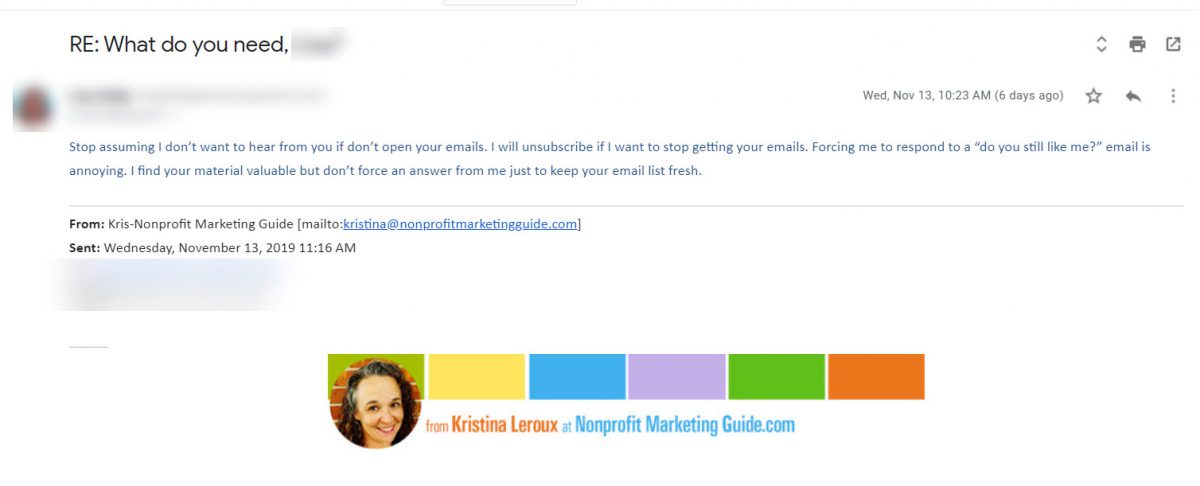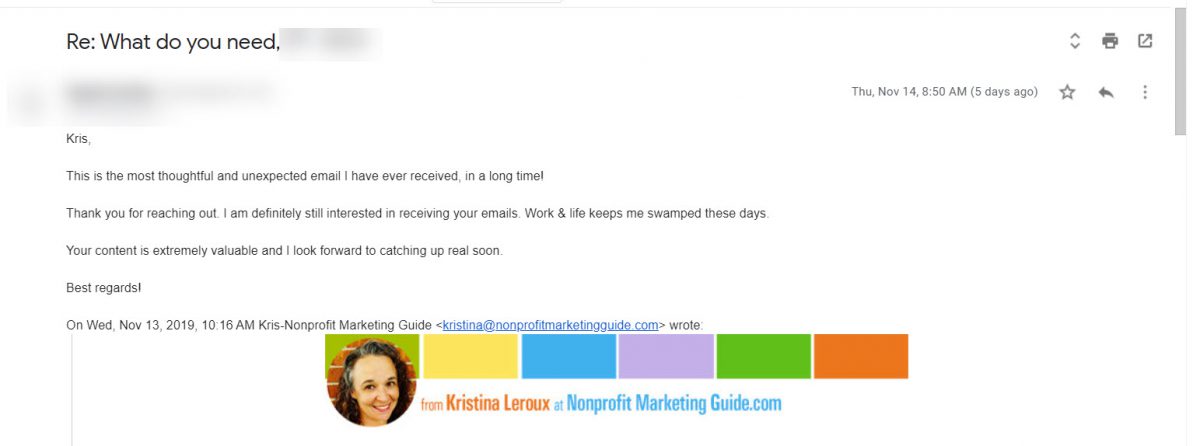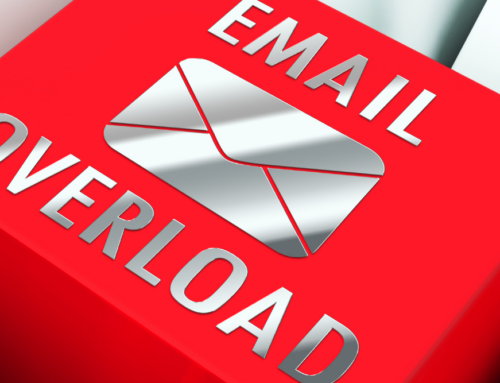It’s an email marketing best practice to keep a healthy mailing list. And that’s not just one of those shiny new things “marketing gurus” tell you to do that don’t really matter in the long run – having an outdated email list will affect your email deliverability.
And email deliverability measures how successful an email is at making it into a recipient’s inbox so it’s a very big deal.
Inbox providers (Gmail, Microsoft, Yahoo, etc) look at many factors to determine your email deliverability. Those factors are changing constantly, but here are a few:
- Content
- Spam software
- Blacklists
- IP reputation
- Domain reputation
- Traffic
- Speed of delivery
- Recipients themselves
According to the 2019 Email Deliverability Benchmarks Study by EveryAction, a little over 20% of nonprofit emails were delivered to spam folders monthly costing nonprofits $92.8 million in 2018.
Your email deliverability should be as (or if not more) important to you as any other email metric like opens and clicks.
Since Nonprofit Marketing Guide runs on email, we take our mailing list VERY seriously and have started taking measures to ensure our email deliverability rates are as great as can be.
We hired an email deliverability specialist who ran several tests to determine which emails are potential trouble-makers with inbox algorithms. (Kivi will talk about “known complainers” on your list tomorrow…yes, that’s a thing.)
We also began running re-engagement campaigns. If you are on our list and haven’t opened an email in a while, you probably received one or two depending on where you are in our cycle.
We send a lot of email – a weekly newsletter, daily blog posts, and monthly writing prompts in addition to notices about upcoming training opportunities. There are lots of chances to open an email from us. All it takes is one open and you are considered engaged.
We start to check-in if you haven’t engaged with our emails in 30 days with reminders about our most popular content or other things you signed up for. (Again, to be “engaged”, you just need to open an email.)
We check in again at 60 days with no engagement with some more resources to possibly help you as well as asking more directly if you still want to receive email from us.
Then we run a more traditional multi-email re-engagement campaign if you go 90 days without opening any of our emails. Finally, you are added to a “Do not mail” list and possibly deleted entirely after that.
These are basic re-engagement best practices which you should follow to keep your list healthy. But the point of this blog post is to warn you:
People will have thoughts and feelings about this!
We knew we might be in for a few cranky emails, when we received this response after talking about how we manage our list in our newsletter:

It says: Guess what? I’ve just booted myself Off This Newsletter List! Bye!

I’m not sure why some people take these things so personally. We aren’t trying to be rude. We just don’t want to email you if you don’t want us to anymore.
Here is a response I received after sending a 60-day re-engagement email:

It says: Stop assuming I don’t want to hear from you if [I] don’t open your emails. I will unsubscribe if I want to stop getting your emails. Forcing me to respond to a “do you still like me?” email is annoying. I find your material valuable but don’t force an answer from me just to keep your email list fresh.

Keeping our email list fresh is one of the most important things we do. And I don’t think it’s unreasonable to check in to see if someone is still interested when they haven’t opened anything from us in two months.
I think since a lot of advice about re-engagement campaigns focus on increasing open rates, people think that is the only reason to run them. They may think it’s about our ego or making sure we look good.
Yes, having a fresh list gives you a more accurate picture of what is actually happening with your email marketing so open and click rates should go up.
But we aren’t doing this to inflate our email metrics to make us feel better about ourselves. We are doing this to make sure everyone who wants our emails gets our emails.
If you don’t perform routine maintenance on your list, you will be penalized.
You have no way of knowing whether an email address is no longer in use and is now used as a “spam trap” or if your emails are just being ignored (which also affects sender reputation and deliverability).
While a reader may be someone who unsubscribes when they no longer want information, you unfortunately can’t assume that and should follow email list management best practices by checking in.
And just so you don’t think it’s all bad out there, here is another response I got to the exact same email:

It says: Kris, This is the most thoughtful and unexpected email I have ever received, in a long time! Thank you for reaching out. I am definitely still interested in receiving your emails. Work & life keeps me swamped these days. Your content is extremely valuable and I look forward to catching up real soon. Best regards!
This person gets it!

When you run a re-engagement campaign, you aren’t trying to be annoying or needy. You are trying to make sure everyone gets what they need. If they aren’t, then they can easily move on. If they are, then great – you’d love to keep them on your list.





